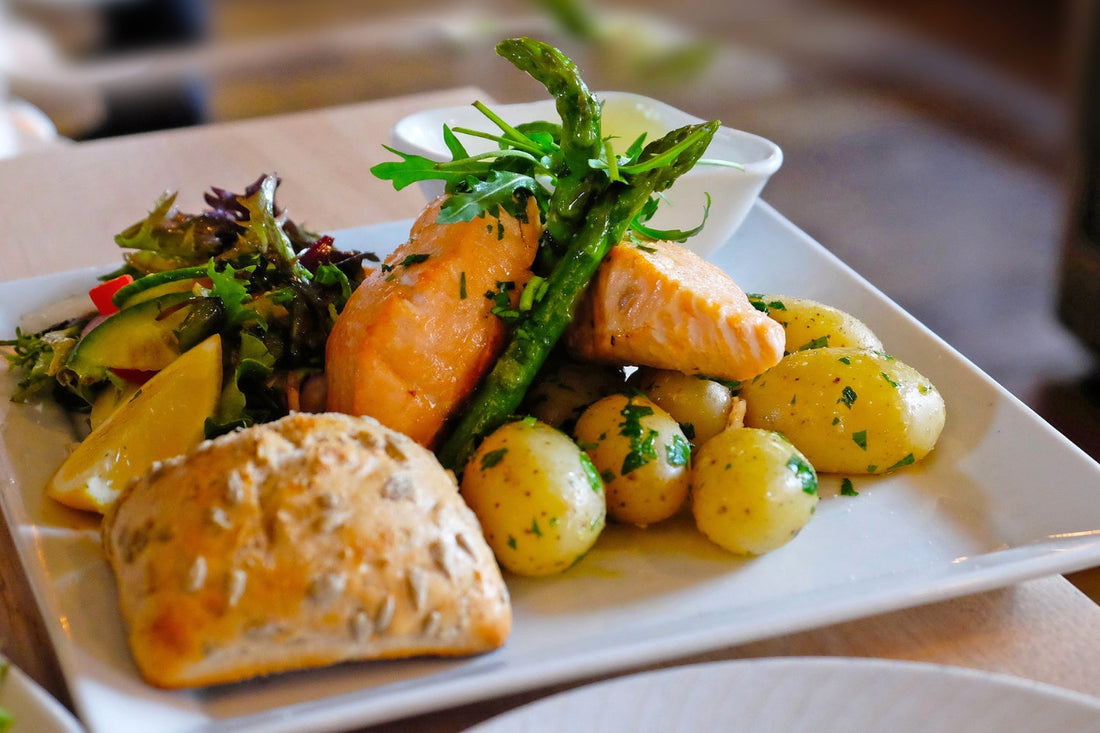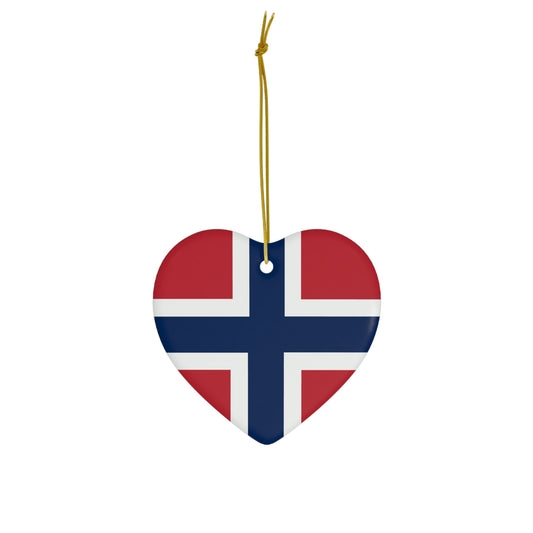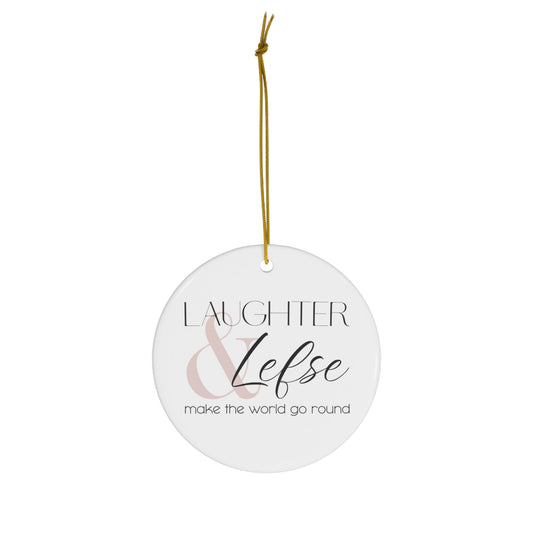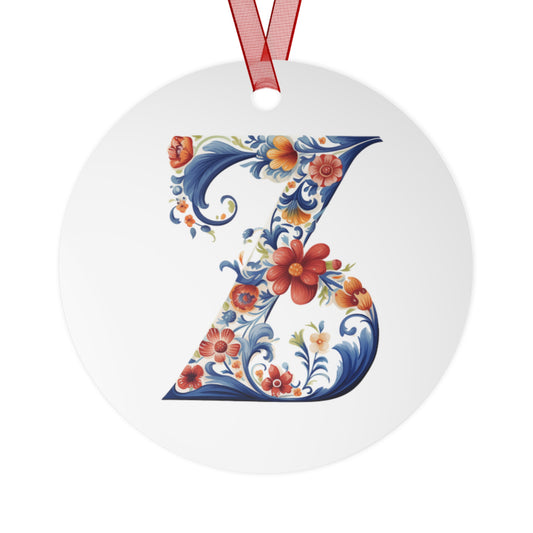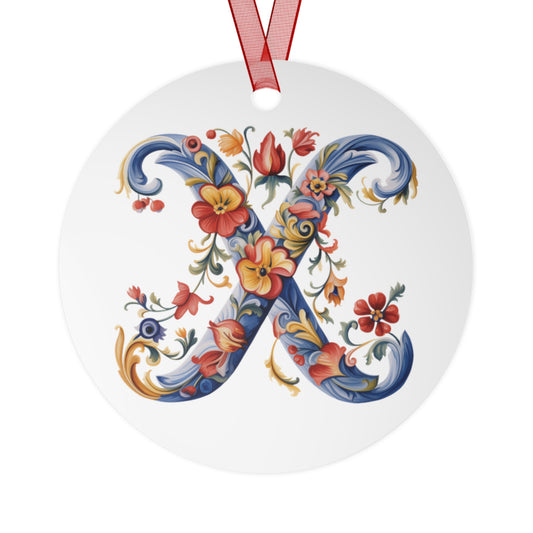
Embark on a culinary journey through the captivating flavors of Norwegian food, from the beloved traditional lefse to the innovative twists of modern Nordic fusion. An exploration of Norwegian food is an adventure that takes you through a rich tapestry of history, traditions, and cultural influences. Sink your teeth into the traditional lefse, a thin potato flatbread that has been a staple for generations of Norwegians. Imagine the warm, buttery taste melting in your mouth, evoking memories of intimate family gatherings and festive celebrations. But Norwegian cuisine is more than just its traditional dishes. Today, a new generation of visionary chefs is revolutionizing the culinary scene with their inventive Nordic fusion creations. Experience the marriage of traditional and modern flavors, where fresh local ingredients combine with international influences to create a tantalizing symphony of taste. Whether you're exploring the cozy cafes of Oslo or indulging in a hearty meal at a remote village, Norwegian food celebrates the simplicity of nature and the artistry of culinary craftsmanship. Get ready to embark on a gastronomic journey that will leave you craving for more.

Norwegian Food We Love: Lefse, Skillingsbolle, and More

Norway's culinary landscape offers a delightful array of traditional treats that are a must-try for any visitor. Among these, Lefse and Skillingsbolle hold a special place in the heart of Norwegian cuisine, each offering a unique taste of the country's rich gastronomic heritage.
Lefse is a traditional Norwegian flatbread, made from potatoes, flour, and milk or cream, rolled out thin and cooked on a hot griddle. This soft, versatile bread can be enjoyed in various ways—spread with butter, sugar, and cinnamon for a sweet treat, or rolled up with savory fillings for a hearty meal. Lefse-making is a cherished tradition, particularly around holidays, symbolizing the warmth and simplicity of Norwegian hospitality.
Skillingsbolle , known as the Bergen cinnamon bun, is another culinary gem that visitors should not miss. This sweet, spiral-shaped pastry, generously sprinkled with sugar and cinnamon, is a staple in Bergen's bakeries and cafes. The name "skillingsbolle" literally means "penny bun," referring to its historical cost. Enjoying a warm skillingsbolle, with its soft, fluffy texture and aromatic flavor, is a perfect way to experience local Norwegian baking at its best.
Beyond lefse and skillingsbolle, Norway offers an array of treats that reflect its culinary diversity:
Krumkake : A traditional waffle cookie, rolled into a cone shape and often filled with whipped cream or other sweet fillings. Krumkake is delicate, with a buttery, vanilla flavor that makes it a festive favorite.
Brunost : This unique brown cheese, made from the whey of goat's milk, has a sweet, caramel-like flavor unlike any other cheese. Brunost is commonly sliced thin and enjoyed on top of bread or lefse.
Rømmegrøt : A rich, sour cream porridge that is a staple in Norwegian comfort food. It is traditionally served with sugar, cinnamon, and a pat of butter that melts into a delicious pool in the center.
Fiskeboller : Fish balls made from minced white fish, often served in a white sauce with potatoes and vegetables. Fiskeboller is a testament to Norway's long-standing relationship with the sea.
Raspeballer : Also known as "komle" or "klubb," these are potato dumplings typically filled with salted meat and served with a hearty stew. They offer a taste of Norway's rustic, home-cooked meals.
Exploring Norway's culinary treats provides a window into the country's culture, history, and people's love for simple, natural ingredients. Whether savoring a lefse with a cup of coffee, biting into a freshly baked skillingsbolle, or indulging in any of Norway's traditional dishes, visitors are sure to find flavors that warm the heart and delight the palate.

Traditional Norwegian dishes and ingredients

Norwegian cuisine is deeply rooted in tradition and the use of fresh, seasonal ingredients. Traditional dishes reflect the country's history of farming, fishing, and foraging. One such dish is lutefisk, a preserved fish dish that dates back to the Viking era. Lutefisk is made by soaking dried fish in lye, giving it a gelatinous texture and a distinct flavor.
Another iconic Norwegian dish is rakfisk, a fermented fish dish that has been enjoyed for centuries. Rakfisk is made by fermenting fish, usually trout or char, in a mixture of salt and water. The result is a pungent and flavorful delicacy that is often enjoyed with flatbread and traditional accompaniments.
Norwegian cuisine also includes a variety of hearty stews, such as fårikål. Fårikål is a lamb and cabbage stew that is traditionally enjoyed during the autumn months. The dish is simple yet flavorful, with tender lamb, cabbage, and a few spices simmered together for hours to create a comforting and satisfying meal.
Embark on a culinary journey through the captivating flavors of Norwegian cuisine, from the beloved traditional lefse to the innovative twists of modern Nordic fusion. An exploration of Norwegian food is an adventure that takes you through a rich tapestry of history, traditions, and cultural influences.
Sink your teeth into the traditional lefse, a thin potato flatbread that has been a staple for generations of Norwegians. Imagine the warm, buttery taste melting in your mouth, evoking memories of intimate family gatherings and festive celebrations.
But Norwegian cuisine is more than just its traditional dishes. Today, a new generation of visionary chefs is revolutionizing the culinary scene with their inventive Nordic fusion creations. Experience the marriage of traditional and modern flavors, where fresh local ingredients combine with international influences to create a tantalizing symphony of taste.
Whether you're exploring the cozy cafes of Oslo or indulging in a hearty meal at a remote village, Norwegian food celebrates the simplicity of nature and the artistry of culinary craftsmanship. Get ready to embark on a gastronomic journey that will leave you craving for more.

Exploring the flavors of Norwegian seafood
With its long coastline and abundance of cold, nutrient-rich waters, Norway is known for its exceptional seafood. From fresh fish to succulent shellfish, Norwegian cuisine offers a wide range of flavors and textures to delight seafood lovers.
One of the most popular seafood dishes in Norway is gravlaks, a cured salmon dish that is often enjoyed as an appetizer. Gravlaks is made by curing salmon with a mixture of salt, sugar, and dill. The result is a delicate and flavorful dish that is typically served with mustard sauce and flatbread.
Another seafood delicacy is the famous Norwegian shrimp. These small, sweet shrimp are a true delicacy and are often enjoyed in salads, sandwiches, or simply on their own. The rich flavor and firm texture of Norwegian shrimp make them a favorite among locals and visitors alike.
For those who prefer shellfish, Norwegian cuisine offers a variety of options. From plump and juicy mussels to tender and flavorful scallops, Norwegian shellfish is known for its quality and freshness. These delectable treats can be enjoyed in a variety of dishes, from creamy seafood soups to flavorful pasta dishes.

The significance of potatoes in Norwegian food
Potatoes hold a special place in Norwegian cuisine and are a staple in many traditional dishes. They are versatile, affordable, and can be stored for long periods, making them an essential ingredient in Norwegian households.
One iconic Norwegian potato dish is the raspeballer, also known as klubb or komle. Raspeballer are potato dumplings that are typically served with boiled salted meat, bacon, and a generous dollop of melted butter. These hearty and satisfying dumplings are a popular comfort food, especially during the cold winter months.
Another beloved potato dish is the potetball, or potato dumpling. Potetball is made by mixing grated potatoes with flour and salt, shaping the mixture into balls, and boiling them until tender. These dumplings are often served with a savory sauce or enjoyed as a side dish with meat or fish.
In addition to dumplings, potatoes are also used in traditional Norwegian soups, such as the creamy and comforting potetlefse soup. This soup combines potatoes, lefse (thin potato flatbread), and vegetables to create a hearty and flavorful dish that is perfect for chilly evenings.
Traditional Norwegian desserts and pastries

No culinary adventure through Norwegian cuisine is complete without indulging in the country's delectable desserts and pastries. From sweet treats to comforting baked goods, Norwegian desserts offer a delightful ending to any meal.
One iconic Norwegian dessert is the krumkake, a delicate and crispy waffle-like cookie. Krumkake is made by cooking a thin batter on a special iron, resulting in a lacy and delicate cookie. These cookies are often rolled into cones and filled with whipped cream or other sweet fillings.
Another popular Norwegian dessert is the skillingsboller, a cinnamon roll that is typically enjoyed with a cup of coffee or tea. Skillingsboller are made with a rich and buttery dough that is rolled out, sprinkled with cinnamon and sugar, and then rolled up and baked until golden and delicious.
For those with a sweet tooth, Norwegian cuisine offers a variety of sweet puddings and desserts. From the creamy and comforting riskrem, a rice pudding often enjoyed during the Christmas season, to the fruity and refreshing multekrem, a cloud-like dessert made with cloudberries and whipped cream, Norwegian desserts are sure to satisfy any craving.

Modern twists on traditional Norwegian dishes

While traditional Norwegian dishes hold a special place in the hearts of locals, a new generation of chefs is putting a modern twist on these beloved classics. These innovative chefs are combining traditional flavors with modern techniques and international influences to create a new wave of Nordic fusion cuisine.
One example of this fusion is the reinvention of lutefisk. Chefs are experimenting with different cooking methods and flavor profiles to elevate this traditional dish. From sous vide lutefisk served with a citrus beurre blanc to lutefisk tacos with a spicy mango salsa, these modern interpretations are breathing new life into an age-old tradition.
Another example of Nordic fusion is the reinvention of rakfisk. Chefs are using rakfisk as an ingredient in creative dishes, such as rakfisk sushi rolls or rakfisk croquettes. These innovative creations showcase the versatility of this traditional ingredient and highlight the creativity of Norwegian chefs.
By blending traditional flavors with modern techniques and international influences, these visionary chefs are pushing the boundaries of Norwegian cuisine and putting the country on the global culinary map.
The rise of Nordic fusion cuisine
Norwegian cuisine is not the only Scandinavian cuisine that is making waves in the culinary world. The rise of Nordic fusion cuisine has brought together the flavors of Norway, Sweden, Denmark, Finland, and Iceland to create a unique and exciting culinary experience.
Nordic fusion cuisine celebrates the simplicity of Scandinavian ingredients and combines them with international flavors and techniques. From reindeer tartare with truffle aioli to seaweed-infused desserts, Nordic fusion cuisine is all about pushing boundaries and challenging traditional notions of taste.
This culinary movement has put the spotlight on the richness and diversity of Scandinavian cuisine, showcasing the region's commitment to sustainable and locally sourced ingredients. Chefs are foraging for wild herbs and mushrooms, using traditional preservation techniques, and creating innovative dishes that pay homage to their Nordic roots while embracing global influences.
Where to experience Norwegian food in Norway
If you're planning a trip to Norway and want to experience the country's culinary delights, there are several places you should add to your itinerary.
In Oslo, the capital city, you'll find a vibrant food scene with a wide range of restaurants and cafes. From Michelin-starred establishments to cozy bistros, Oslo offers something for every palate. Be sure to try traditional dishes like lutefisk and gravlaks, as well as modern Nordic fusion creations that showcase the city's culinary innovation.
For a more authentic and immersive experience, consider visiting smaller towns and villages in Norway. Places like Bergen, Stavanger, and Trondheim have a rich culinary heritage and offer a chance to taste traditional Norwegian dishes in a cozy and intimate setting. Don't miss the opportunity to try local specialties like fårikål and raspeballer, as well as fresh seafood straight from the fjords.
If you're looking for a unique culinary adventure, consider visiting the Lofoten Islands. This remote archipelago is known for its breathtaking natural beauty and its thriving seafood industry. Here, you can join a fishing trip and catch your own fish, which can then be prepared and enjoyed in a traditional Norwegian style.

Norwegian food festivals and events
Norway is home to a variety of food festivals and events that celebrate the country's culinary heritage. These festivals offer a chance to taste traditional dishes, learn from local producers and chefs, and immerse yourself in Norwegian food culture.
One such festival is the Gladmat Festival in Stavanger. This annual event showcases the best of Norwegian food and drink, with over 200 stalls offering a wide range of local specialties. From seafood and traditional desserts to artisanal cheeses and craft beers, the Gladmat Festival is a must-visit for food enthusiasts.
Another festival to add to your list is the Matstreif Festival in Oslo. This event brings together producers, chefs, and food lovers from all over Norway to celebrate Norwegian food and drink. From cooking demonstrations and tastings to workshops and seminars, the Matstreif Festival offers a comprehensive look at Norwegian cuisine.
If you're a fan of seafood, don't miss the Bergen Seafood Festival. Held in the historic Bryggen area of Bergen, this festival showcases the best of Norwegian seafood. From fresh fish and shellfish to traditional fish cakes and smoked salmon, the Bergen Seafood Festival is a seafood lover's paradise.

Conclusion: Embracing the rich culinary heritage of Norway
Norwegian food is a celebration of tradition, innovation, and the beauty of nature. From traditional dishes like lefse and rakfisk to modern Nordic fusion creations, Norwegian cuisine offers a diverse and exciting culinary experience.
Whether you're indulging in a traditional meal at a cozy cafe or exploring the innovative creations of visionary chefs, Norwegian food will leave you with a deep appreciation for the country's culinary heritage.
So, embark on a culinary adventure and explore the flavors of Norwegian cuisine. From the beloved traditional lefse to the modern twists of Nordic fusion, Norwegian food is sure to captivate your taste buds and leave you craving for more.

